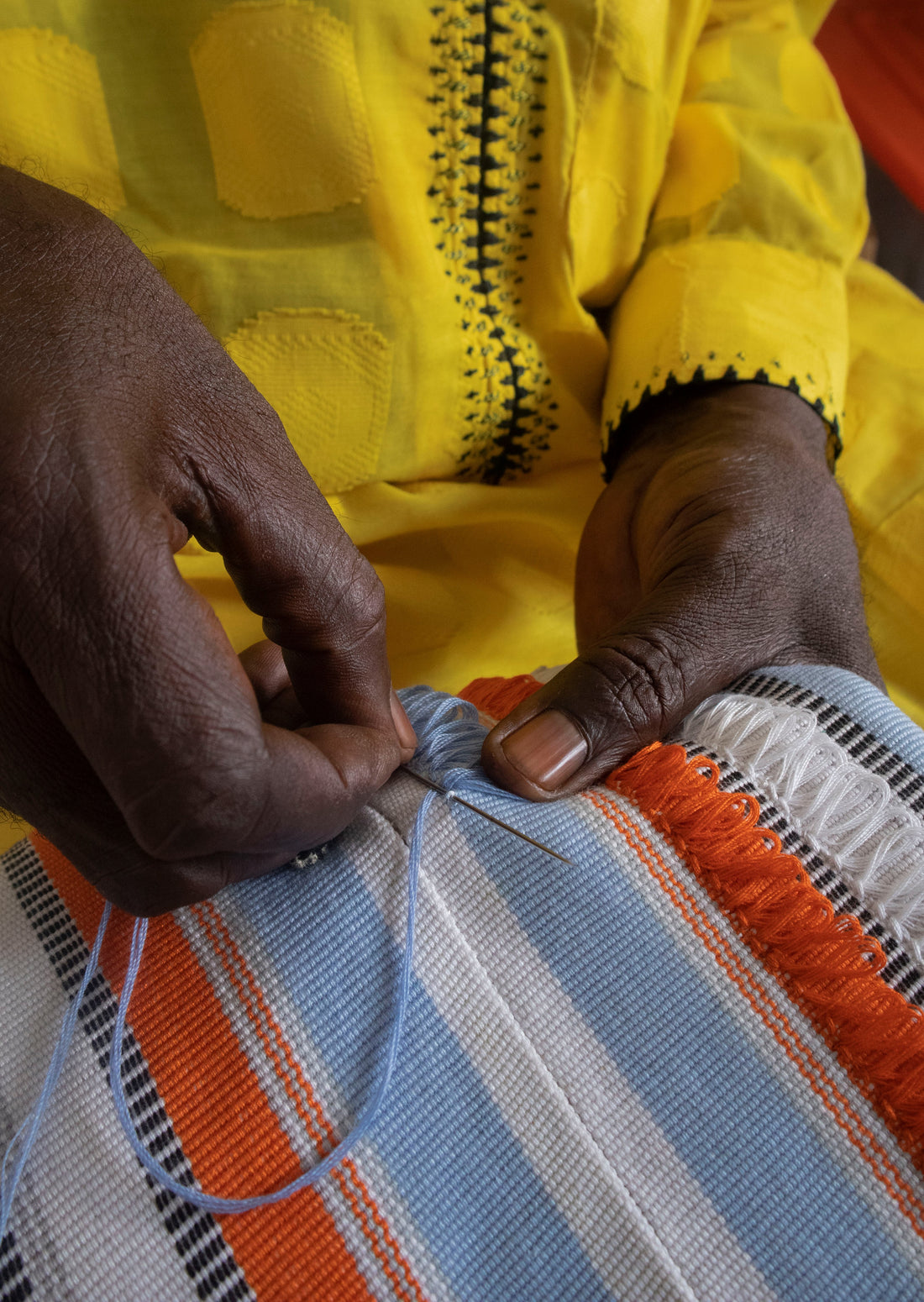By: Awosanmi Temidayo
Please note this article has been translated from the Hausa language to English.
"One thing that distinguishes my job is the guarantee I provide.” - Suleiman

FAST FIVE WITH MR. IDRIS SULEIMAN
- Please introduce yourself.
My name is Idris Suleiman and I work as an embroidery designer for the Shekudo brand.
- Where do you live?
Obalende, Lagos.
- What year did you join the Shekudo team?
I started working at Shekudo in 2017.
- How many years of experience do you have in embroidery designing?
I have over seventeen years (17) in creating embroidery designs.
- What is your favourite food?
- What do you do for fun?
When I’m not working, I’m either watching movies or relaxing.

Idris Suleiman, head of embroidery and appliqué at Shekudo has been practising the embroidery craft for the past seventeen years. After decades of exposure to the craft, he was impressed by Shekudo’s high-quality and customer-oriented designs and after conversations with our founder Akudo, he decided to join our team.
Since 2017, Mr. Idris has contributed a great deal to attaining our major objective; producing high quality, innovative designs that our customers can appreciate no matter where they are in the world.

Suleiman’s unmatched skill in ideating a variety of designs and bringing exciting design concepts to life is one of the reasons he is beloved by the team. His gentle nature and constant smiles are just a bonus to his beautiful hand work.
Suleiman has a deep enthusiasm for trading, and this can also be linked to the illustrious nature of his tribe, the Hausas in Northern Nigeria. If Suleiman wasn’t an embroidery maker, he believes his bargaining skills would have made him a successful trader.

Perhaps, the most distinguishing feature (aside from the beauty of Suleiman’s work) is his fast and efficient methods where he can deliver large QTYs in a short space of time. This has caused him to develop an admirable level of trust among his customers. "One thing that distinguishes my job is the guarantee I provide. It does not fade or change as a result of my knowledge,” Suleiman says.

Suleiman shares that one of the most challenging parts of the embroidery making process is the tasseling (A stitch used in embroidery, by which a loose fringe is produced: open loops are made of multi strands of thread and then layered), but Sulieman’s skills honed over the decades has helped him bypass this challenge by using alternative techniques . Normally the weave for the shoes and bags are cut to shape and previously Suleiman would tassel these fabrics before they are joined to the shoe.
However, to make work more efficient, Suleiman now tassels the shoe at the final stage of the process when it has been coupled to the leather and heel. This is a far more difficult and intricate process, although Sulaiman has mastered it to avoid any excess tassels or patchy work.

Suleiman plans to continue embroidery for the foreseeable future, exploring global methods while combining them with his own traditional techniques.

